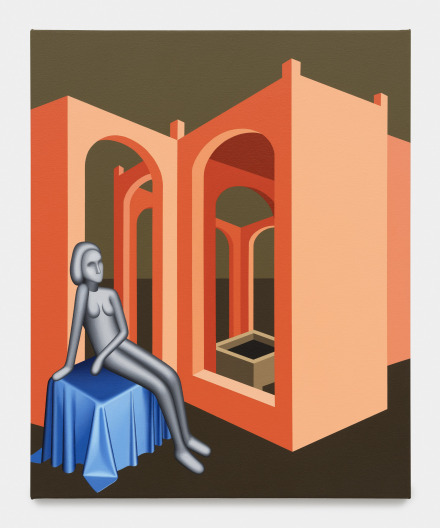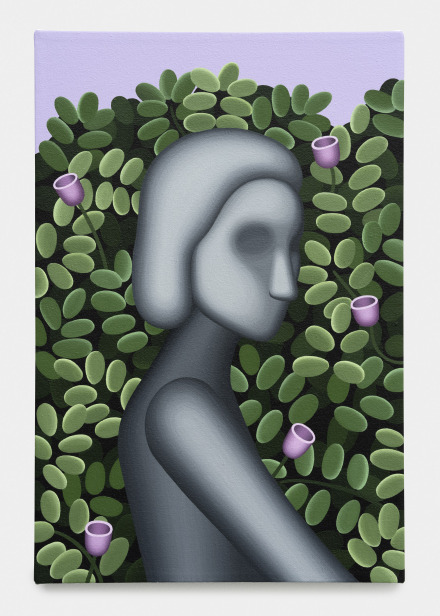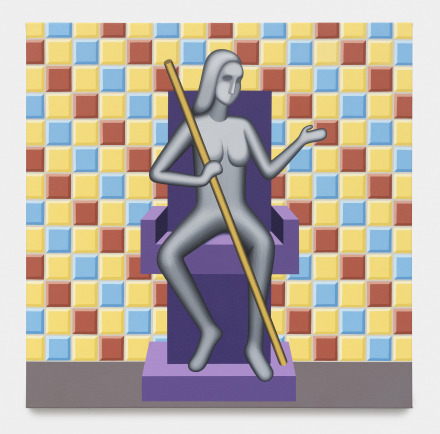
Emily Ludwig Shaffer, Mary (2023), via Galerie Pact
This month in Paris, artist Emily Ludwig Shaffer presents a body of new works at Galerie Pact that continue an expressive and iterative approach to the language and canon of art history, interpreting and recontextualizing classical signifiers as a colorful and densely layered series of canvases. Using the work as a space to reclaim the woman’s body from the male gaze, her pieces draw on human form and its relation to history to create new modes and representations.

Emily Ludwig Shaffer, Pretty Guy (2023), via Galerie Pact
Shaffer makes frequent reference to classic sculpture, erasing any erotic, masculine, or dominant view of the woman, often in relation to spaces and sites associated with women. These sites are twisted through a lens of intimacy and distance, form and its evaluation in a series of new visual exchanges and relationships. Her work predominately features semi-enclosed environments, where intimacy soaks into the open and unique structures. Through the relationship between space and body, she paints a new type of portrait: one with clear technique and ambiguous references. Iconography created by the male gaze is replaced by complex and transitory states: boredom, friendship, doubt, and reflection. Yet, the opaque faces and bodies of these women reveal no specific characteristics and no clear intentions. The relationship is reversed, turning the body towards a more nuanced and contextual relationship to its ground.

Emily Ludwig Shaffer, Power Trappings (2023), via Galerie Pact
The titles are often composed of iconic names that the artist draws from various sources, including the Mesopotamian goddesses at the Pergamon Museum in Berlin and historical or religious figures, such as Mary. For example, Oh, Joan is inspired by the history of princess Joan of England, the daughter of Edward III, who was sent to marry a Castilian prince at the age of 14. Despite warnings about a mysterious illness ravaging France, her journey went ahead and the young princess contracted the illness at Bordeaux, becoming a victim of what would become known as the Black Death.
Taking this as a touchpoint for the interpretation of the woman’s body and its inherent politics through time, the artist turns each image into a meditation on history, and the images we use to both frame and understand its underlying relationships and lives.
The show closes June 15th.
– E. Burke
Read more:
Emily Ludwig Shaffer at Galerie Pact [Exhibition Site]



